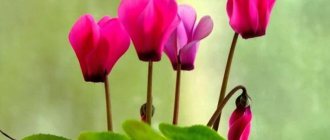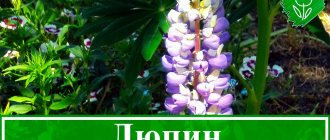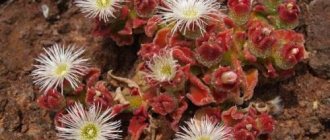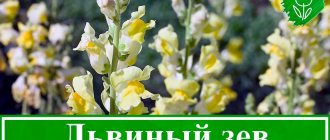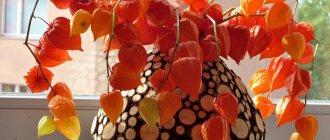This perennial is prized for its partially evergreen, colorful leaves, which are green, red-violet, purple-brown, red-pink, mottled white or cream, depending on the variety. The species is ideal as a ground cover plant for shady corners of the garden, looks good in rocky gardens, near a pond. This article describes how to grow a creeping tenacious plant - planting and care in open ground, photos of varieties are presented with a description.
What kind of plant is this: description of the culture
The tenacious, or ayuga, is part of the Lamiaceae family. The grass is tenacious evergreen, deciduous or semi-evergreen. There are both perennial and annual species. The bush grows from 0.05 to 0.5 m. The arrangement of the leaves is opposite.
What does it look like
Flowers are violet, yellow, purple or bluish. In all groups, species do not require special conditions for cultivation. Gardeners mainly use decorative foliage and ground cover species. In landscape design, it is planted in rockeries and mixborders.
The homeland of the tenacious flower is Asia Minor, North Africa, Europe, the Caucasus, the Far East, and Eastern Siberia.
Beneficial features
The leaves of the plant in question are used for culinary purposes. All its above-ground components are used in traditional medicine recipes for medicinal purposes, as they have healing, anti-inflammatory, and hemostatic effects.
Compatibility with other plants
Due to the unusual and non-uniform color of the leaves, it is better to plant the tenacious plant next to monochromatic plants. It should also be remembered that ayuga is classified as an aggressor plant (it easily conquers territory from small flowers), so it is better to choose plants that can “defend” their territory as neighbors. Tenacious goes well with the following plants:
- ferns;
- iris;
- rudbeckia;
- loosestrife;
- delphinium.
If you don't already have ajuga in your garden, correct this mistake immediately! As you can see, this plant brings only pleasure: with its beautiful appearance, ease of care and reproduction, and wide compatibility with other plants. By planting a tenacious plant, you will acquire the most unpretentious and one of the most beautiful inhabitants of your flower garden!
What species grow in nature
Ageratum - growing from seeds, care and planting
In their natural habitat there are about 70 species of tenacious.
Geneva
Geneva's tenacious, or shaggy, reaches a height of 50 cm. The upper leaves have an elongated or ovoid shape, the lower ones are crenate-toothed. The flowers are blue or pink. Inflorescences are collected in whorls of 2-5 pieces. The stems of this species do not grow. Flowering occurs in April-July.
Most often found in the European part of Russia, Ukraine, Moldova, Belarus and the Caucasus. The most popular variety of this species is the tenacious Geneva Helena. It is a perennial that grows up to 50 cm in height.
What does the Geneva survivor look like?
Chios
The tenacious Chios is common in the Caucasus, Iran, and the Mediterranean. The species mainly grows on rocky terrain, roadsides, and embankments. It can reach a height of no more than 20 cm. The shoots are erect. They are covered with white fibers. The leaves are spatulate below and three-toothed above. The flowers have the shape of a false spike and are located at the ends of the shoots. They are yellow.
For your information! The pulp from the shoots promotes faster healing of wounds.
What does the Chios survivor look like?
Pyramidal
The pyramidal type began its existence in Europe. It can grow in rocky areas and among bushy plants. It reaches a length of up to 25 cm. The leaf plates are similar to an oval. They have a long pile. Flowers grow up to 10 cm. They can be white, pink or purple. There are several varieties of this species:
- Lunar Landing. These flowers are yellow in color. The variety was bred by botanist F. Riotto;
- Crispa. The leaves on the bush are large and compressed. They have a greenish color. Petals are blue;
- survivor Metallica Crispa. The bush grows up to a maximum of 5 cm. The leaves are small green in color with a metallic tint.
Shaggy
Height up to 50 cm. Flowers lilac. The species is distributed in Russia, Ukraine and Belarus.
Eastern
The eastern species grows up to 10-20 cm. Leaves are wedge-shaped. Blue flowers. The bracts have a blue tint.
Laxmana
The height of the bush is 0.2-0.5 m. There are drooping leaves on the shoots. The entire leaves are large in size and silver in color. The flowers are small. They come in light pink and light yellow.
Laxman's view
Herringbone
It grows only up to 6 cm. The leaves have a green-gray tint and jagged ends. Look like cones. Yellow flowers.
Turkinstan
Grows in Uzbekistan and Tajikistan. A small number of branches is the main feature of this species. The shoots are thick. They have leaves in the shape of an ellipse. The leaves are colored brown. Purple flowers. The plant has medicinal properties.
For your information! Other types include: willow, southern, spread. They are used in folk medicine.
Application in landscape design
Creeping tenacious is a small plant, grows up to 10-30 cm in height, but with the help of rooted shoots it grows strongly, forming extensive carpets. In cultivation, this feature can be problematic because the plant can quickly drown out other, weaker species, but sometimes it is very desirable when we are looking for a classic ground cover plant for the garden. With its help you can cover empty, shady corners of the garden or use it to cover the ground under trees and shrubs.
In gardens and local areas, there are many options for using tenacity in landscaping:
- In a group planting. The tenacious ones are most beautifully presented planted in groups of several dozen pieces. For an interesting visual effect, it is worth planting many varieties with variegated, multi-colored leaves and flowers nearby.
- ground cover plant. The tenacious plant has fast-growing shoots that take root easily, and in the shortest possible time covers the area with a carpet of multi-colored leaves, so it is well suited for sodding the soil. Depending on the variety, the leaves are dark green, brown, red, red-pink, spotted - they create a pleasant background for blue, white or pink flowers. The leaves are partly evergreen, so the survivors will decorate the garden during mild winters.
- For shady areas . Tenacious plants can grow even in very shady places where other plants cannot grow due to lack of sunlight. They are ideal for planting in the shade of large trees, under bushes. Plants grow well on slopes and any slopes of the area - they have soil strengthening properties and prevent landslides.
- Near bodies of water . Creeping tenacious can be planted near ponds and reservoirs; it tolerates even very wet substrates and works well as an edging for a reservoir. Near the pond she will find appropriate soil moisture and shade.
- In rocky gardens . Looks good on rocky cliffs, where its colorful, partly evergreen leaves create an interesting background. Excellent for decorating stone walls from which shoots hang picturesquely.
- border plant. These perennials are suitable for edging flower beds and paths.
- For pots. The tenacious ones can be grown in large pots and containers - they will decorate a shady terrace or balcony.
- Honey plant . Tenacious plants belong to honey plants, attracting pollinating insects. They bloom for a long time (from May to August), providing bees with pollen and nectar for several months.
If you do not need the ground cover qualities of the tenacious and do not want it to take over the garden, you can limit its growth using root barriers or plant the tenacious in old pots buried in the ground, and you also need to systematically cut off rooting shoots. To limit the growth of the tenacious plant, you can plant it in moist gravel gardens in compositions with other ornamental shade-tolerant plants:
- heuchera;
- hosta;
- ferns;
- brunneroy;
- ivy;
- geranium;
- touchy;
- low ornamental grasses.
Ajuga reptans also has medicinal properties. The infusion has antibacterial, disinfectant, anti-inflammatory and astringent effects, promotes the normal functioning of the heart and cardiovascular system, and the thyroid gland. Has an analgesic and calming effect, relieves persistent cough. Infusions can also be used as compresses for affected areas of the skin. They are also used for conjunctivitis.
The most popular varieties
A wide variety of varieties are bred on the basis of creeping tenacious.
Burgundy Glow
Lemon balm - growing from seeds in the country
Vigorous Burgundy Glow is an evergreen and perennial plant. It grows in height from 10 to 25 cm. The leaves are wide. In Moscow, flowering time lasts from April to November. The flowers are purple-violet. They have burgundy and green spots and a white edge.
Black Skellop
The tenacious Black Scallop has dark purple leaf blades. Jagged edges are visible on them. Blue flowers.
Arctic Snow
Grows in any area where there is no sunlight. The leaves are lobed and dark green in color. They grow up to 10 cm in length. They also have a smear in the middle. This species grows to 5-10 cm in length.
Chocolit Chip
This flower has the smallest leaves, only 3-4 cm. They are colored chocolate. The flowers fit tightly together.
Multicolor
Tenacious Multicolor has leaves of different colors. They can be cherry-purple with various spots of cream, pink, and orange. The spots are unevenly spaced. The flowers are blue. They are small in size. Plant height is 10-15 cm. The leaves are large and shiny.
Atropurpurea
The tenacious Atropurpurea grows up to 15 cm. The leaves are brown with a purple and reddish color.
For your information! This species has no shoots.
Tenacious Atropurpurea
Mahogany
The height of the bush is 10-15 cm. The leaves have a rounded shape. They are reddish-purple and black-burgundy in color. Blue flowers.
How to plant a survivor correctly
To plant ayuga at home, you do not need any special skills. This plant is so unpretentious and tenacious that no matter how inept you are in gardening, it will still germinate.
- Creeping tenacious grows well both in full shade and in light (but still try to avoid areas with direct sunlight). It will grow well under bushes.
- She feels good on any soil, but prefers loam and sandy loam.
Planting and propagation of ayuga (video)
- Requires at least a minimum amount of precipitation. Can tolerate drought for a month. But it is necessary to water newly planted seedlings or seeds for at least the first week. At first they need good care.
- Do not plant the survivor in places where animals may be walked on or walked on it. This plant is very sensitive to mechanical stress. The fragility of the stems is noticeable even in the photo.
Features of home care
Growing and caring for them in an apartment is different than for plants that grow in open ground. Therefore, below we will describe in more detail how to plant and care for the tenacious creeping house creeper.
Watering
Pyrethrum maiden - growing from seeds
Before new leaves appear on the seedlings, watering is carried out so that the soil does not have time to dry out. When the plant begins to grow in length, watering is reduced to a minimum. It is watered only when the soil is completely dry.
Spraying
The plant in question is completely unpretentious in care, so no additional spraying is required.
Humidity
This plant is preferable to grow in conditions of moderate humidity. If there is excess moisture, it can get sick.
Priming
In order for the survivor to take root, it is necessary to use loose and moist soil. Loose, fertile soil that allows air to pass through is most suitable. The best option is to mix turf soil, sand, peat, humus.
Important! Before planting a flower, loosening additives, as well as drainage and organic fertilizers are mixed with heavy soil.
Feeding
Wood ash is the most suitable fertilizer. Organic fertilizers are also suitable for ayuga. The more you add, the better it will be. Compost and peat are used. Dry fertilizer is poured both under the root and diluted in water to irrigate the leaves.
Mineral fertilizers are applied at certain intervals. For this purpose, complex phosphorus-potassium species are used. In addition, wood ash is used.
Growing and care
The tenacious ones are not only very interesting and attractive, but also easy to grow. The plant grows well in our climate in the wild, so it does not cause any special care problems. These are quite extensive perennials that can choke out other species in a short time. They spread very quickly thanks to rooting shoots.
To prevent overgrowth throughout your garden, regularly remove unwanted shoots and new established rosettes.
Watering and fertilizers
The tenacious plant does not tolerate drought well, so you should remember to water it regularly. In the shade, the soil can be a little drier, this will protect the plants from mold and fungal diseases.
Before planting, the soil should be enriched with well-rotted compost. These plants do not require intensive mineral nutrition; it is enough to feed the tenacious plant in the spring with a multi-component slow-acting fertilizer, which will stimulate the plant to bloom profusely.
Trimming
After flowering, the inflorescences need to be cut off so that the tenacious plant does not spread its seeds throughout the garden and grows only in a certain area.
After flowering, large areas overgrown with tenacious plants can be mowed with a mower with high-set blades.
Care in autumn, wintering
Tenacious plants are completely frost-resistant plants; they do not need to be covered for the winter. However, during very frosty, snowless winters, the leaves can freeze, so you can cover them with branches of coniferous plants. We remove frozen bushes in the spring, the plants will grow back during the next growing season.
Diseases, pests
The tenacious ones are quite resistant to diseases and pests. However, under the wrong growing conditions they can get sick. Plants grown in areas that are too dry may be attacked by aphids. A humid growing environment can promote the appearance of powdery mildew (a fungal disease), the symptoms of which appear as a grayish coating on the leaves. As soon as symptoms appear, a fungicide must be applied immediately, otherwise the disease may spread to other plants, ornamental and cultivated. For aphids, an appropriate insecticide must be used.
Vegetative propagation
Popular methods of propagating the tenacious are vegetatively and by seeds. The seed method can only be used the first time. Then the vegetative method is applied. Reproduction is carried out in spring or autumn in September.
Important! Varietal crops that are collected from seeds can be very different from the mother plant.
The vegetative method requires the following steps:
- Separate the overgrown rosettes from the mother bush.
- Place the sockets in the required location. Even if they have only one root, there is still a chance of rooting.
There is no need to water immediately, only after the planted flower begins to gain strength and begins to grow.
After flowering
It is impractical to collect seeds; it is possible to prevent self-seeding, but it is troublesome; different plants (that do not correspond to the mother specimen) spread very quickly on the site. For the same reason, you should not collect seeds manually, which is why many gardeners propagate the tenacious plant with rosettes.
This plant can easily survive a snowy winter, but if there is not enough snow, it is better to cover it with spruce branches, peat, and dead wood. Young plants must be covered for at least the first year.
Planting by seeds
It is better to purchase seeds for planting at a garden store. Their germination rate is high. Seeds are sown in open ground in the spring. The soil must be well warmed up. Planting in autumn is also possible.
The plant will develop better in a shaded place. However, it will also grow well in a sunny area. Most often it is planted under a tree, since the ajuga will not take up many nutrients.
The most suitable for this flower are fertile loams and garden soils. Before sowing seeds into the soil, fertilize them with organic matter, superphosphate or complex mineral fertilizer.
Note! Transplantation is carried out in spring or autumn. The plant is dug up and planted in a new, previously prepared place.
Growing conditions
The survivors prefer semi-shaded and fully shaded places. They can be planted in a sunny location, but they require more moisture in the substrate. It is an excellent ground cover for any soil type, although it grows best in fertile areas. If you decide to grow varieties with variegated leaves, you should provide them with adequate access to light, otherwise they will lose their intense, rich color.
Optimal soil for survival:
- loamy-sandy;
- fertile;
- humus;
- rich in minerals;
- neutral: pH 7.0;
- quite wet.
Tenacious creatures have a rather shallow root system; the roots draw water from the upper layers of the soil.
If the soil is poor and dry, the survivor may die.
Diseases and pests
The tenacious plant can be affected by many dangerous diseases and pests that can destroy a flower overnight.
Fungal rot
It occurs when the humidity of the earth and air is too high. Because of the fungus, the plant and its roots begin to rot. The flower stops developing, does not bloom and does not produce children. Yellowing and falling of leaves occurs. Due to root rot, a gray coating and brown spots appear on the roots. What to do to combat this disease:
- diseased parts are removed using a sharp instrument. Charcoal is poured onto the cut areas;
- healthy parts and other plants are treated with fungicides.
What does fungal rot look like?
Snails and slugs
These are the only pests that spoil ayuga. Insects do not attack it, as it has a unique composition. The leaves contain a substance that prevents the development of larvae. The appearance of slugs and snails is associated with excessive humidity. As a means of control, special chemicals are used, which can be purchased at any gardening store. Crushed hot pepper is used as a folk remedy. A mustard solution is also used, which is sprayed on the plant. To prevent pests from moving around the area, crushed eggshells are used. It is sprinkled on leaf plates.
Snail is a pest of ayuga
The tenacious plant is an unpretentious flower. It can grow anywhere: in the shade or in the sun. However, if there is excessive humidity, slugs and diseases can appear on it. In this case, the flower must be saved, otherwise it may die in a matter of days.
Medicinal properties of tenacious
The composition of the tenacious has been studied rather poorly; it is known that it contains tannins. A decoction of this plant, as well as juice, is widely used to treat:
- For gastrointestinal diseases (stomach ulcer and gastritis), crushed leaves are brewed with boiling water in a glass, left for 2 hours, poured into a thermos or wrapped in a warm scarf, then drunk warm, 1 tbsp. l. three times a day.
- Female organs and genitourinary system, as an analgesic and expectorant, also for malaria. Use the decoction given above, but take it 5 times a day, also drink warm.
- For colds, brew creeping tenacious, linden flowers, lemon balm and oregano, all in equal quantities. Drink warm several times a day, the mixture causes increased sweating, which removes harmful substances and reduces temperature.
- If your hair grows poorly, you should rinse it with ayuge decoction more often.
- Healing wounds or bites. Make a paste from a freshly picked leaf and apply it to the site of a bee or other insect bite, as well as to a non-healing wound.
- For anorexia (painful thinness), take a bath at night, adding herbal tincture to the water.
Special properties of the plant
The name of the survivor justifies its valuable qualities. Having extraordinary resistance and unpretentiousness to bad weather conditions, diseases and the place of growth, the plant very soon takes root and spreads throughout the area. Ayuga does not allow weeds to develop and requires almost no care, however, it retains its appearance throughout the warm season. The only thing you need to pay attention to is to monitor its uncontrolled reproduction on the site.
The erect stem of the tenacious plant has a height of several to 40 centimeters; at the bottom of it there are large leaves, and towards the top they become smaller. The flowers are blue, purple, dark blue, yellow, and are collected in false whorls.
Today, more than forty varieties of ayuga are known, growing in different places on the planet. In its original form, the tenacious blooms with bright blue flowers. However, breeders have developed many ornamental varieties. They differ from each other in the height of the stems, the shape of the leaves, the flowering period, the color and patterns on the foliage.
Possible problems when growing creeping tenacious
The tenacious creature is unpretentious and does not require much physical strength. But diseases and pests have not been canceled.
Diseases
When growing a cultivated ground cover, monitor the humidity, since if there is an excess, the roots of the plant die off, and the decorativeness of the foliage is lost. To protect the plant from root rot, place the flowerbed away from the place where water stagnates in the spring. It has a detrimental effect on the flower.
Advice! The condition of the soil must be constantly monitored. It should be moist and loose, but not wet.
Pests
The tenacious creature has an unusual chemical composition, thanks to which it is able to independently “repel” small insect pests, but it cannot escape from slugs. It is the succulent leaves that attract gastropods. To drive away uninvited guests from the garden bed, small hillocks of stones are placed around the perimeter, over which it is difficult for slugs to crawl.
Advice! In case of a massive pest invasion, the ground is sprinkled with wood ash.
Tenacious is a beautiful ground cover flowering plant that does not take much time and effort from the gardener. The main thing is to carry out all manipulations on time to prevent the lawn from thickening. By performing simple maintenance operations, in a few months you can have a colorful carpet in your flowerbed.
Plotter roll, 610 mm x 50 m x 50.8 mm core, 80 g/m2, CIE whiteness 146%, Brauberg
669 ₽ More details
Plotter roll, 914 mm x 50 m x 50.8 mm core, 80 g/m2, CIE whiteness 146%, Brauberg
799 ₽ More details
German language 2nd grade workbooks


